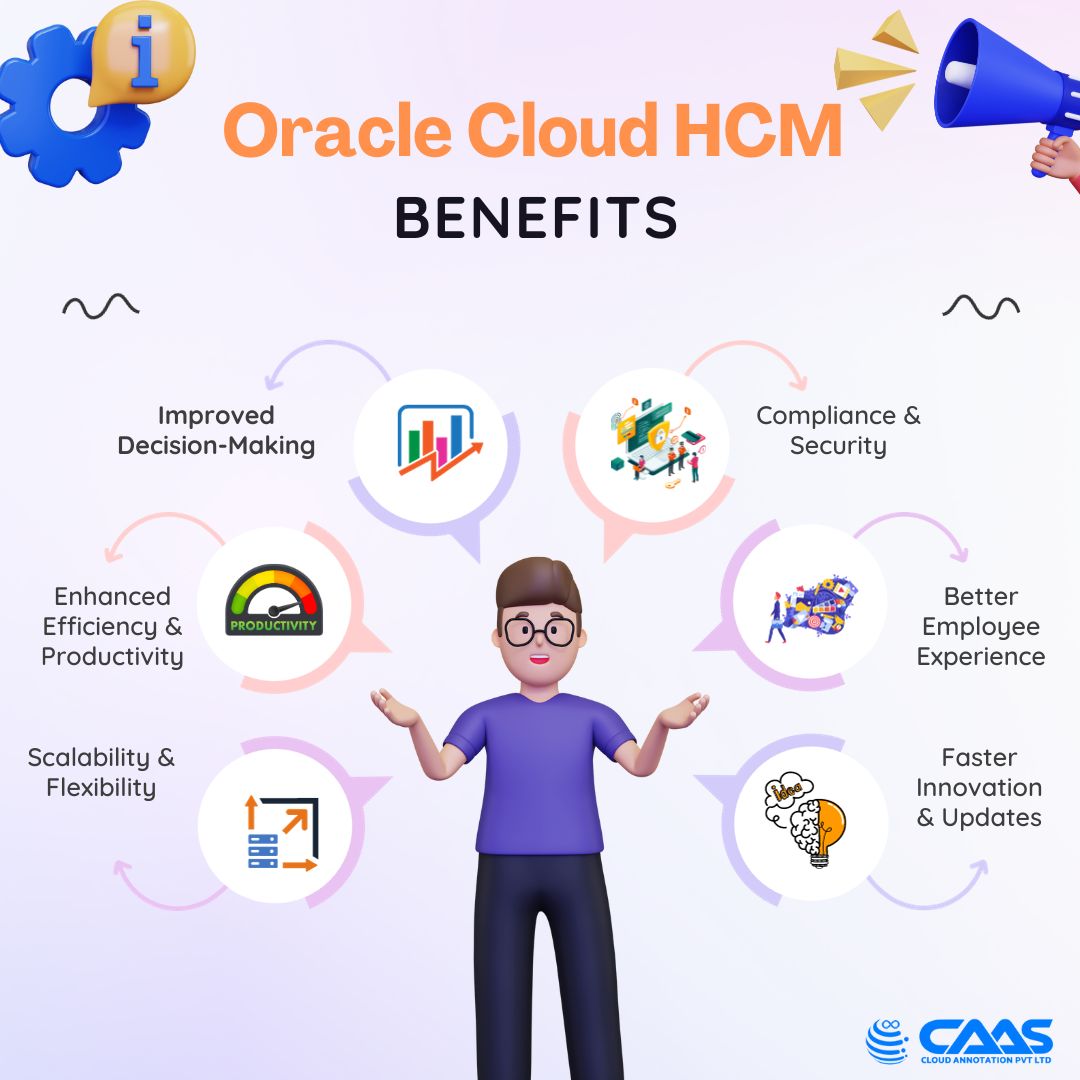Revolutionizing Business Processes with Cloud Annotation Services and Oracle Cloud Solutions Introduction: In the dynamic realm of digital transformation, companies are increasingly relying on cloud-based solutions to boost productivity, optimise processes, and maintain a competitive edge. The Cloud Annotation platform, which is easily connected with Oracle Cloud services, is one such formidable player in the cloud space. The several services provided by the Cloud Annotation website are examined in this article along with how they relate to Oracle Cloud HCM, Oracle Cloud Applications, Oracle Intelligent Advisor, Oracle Integration Cloud (OIC), and custom application/custom ERP development and support. Cloud Annotation Services: A Pinnacle of Precision: A state-of-the-art platform called Cloud Annotation specialises in data annotation services, which are essential to processes including machine learning and artificial intelligence. Whether it is used for video analysis, picture recognition, or natural language processing, Cloud Annotation guarantees that data is carefully labelled so that algorithms are trained efficiently. The platform is a vital resource for companies experimenting with AI-driven solutions because of its robust annotation tools and easy-to-use interface. Oracle Cloud HCM: Revolutionizing Human Capital Management: Oracle’s dedication to revolutionising HR operations is demonstrated via Oracle Cloud HCM (Human Capital Management). It uses data insights to optimise employee engagement, talent recruiting, and workforce management. It is seamlessly connected with Cloud Annotation. HR decision-making is given new depth when combined with Oracle Cloud HCM’s analytical capabilities and Cloud Annotation’s accurate data labelling. Oracle Cloud Applications: A Comprehensive Business Suite: Oracle Cloud Applications provides a range of business solutions, including supply chain management (SCM) and enterprise resource planning (ERP). Making decisions based on data now has an additional layer of intelligence thanks to the integration with Cloud Annotation. Companies can use annotated data to improve Oracle Cloud Applications and make sure that every procedure is optimised for optimal performance. Oracle Visual Builder App: Crafting Intuitive User Experiences: With the Oracle Visual Builder App, companies can develop unique apps without requiring a lot of technical knowledge. Enterprises may improve the look and feel of their apps by integrating Cloud Annotation into the development process. Because of the two platforms’ synergy, users can enjoy intuitive user interfaces supported by accurately labelled data. Oracle Intelligent Advisor: Guiding Smarter Decision-Making: Machine learning and artificial intelligence are used by Oracle Intelligent Advisor to automate decision-making. Organisations can improve the intelligence of their decision models by combining them with Cloud Annotation. With increased proficiency, the platform interprets and processes annotated data, yielding more precise insights and suggestions for well-informed decision-making. Oracle Integration Cloud (OIC): Bridging the Digital Divide: OIC is the central component that connects several on-premises and cloud apps. Businesses can guarantee smooth data flow across apps by including Cloud Annotation in their integration strategy. This synergy fosters a unified digital ecosystem and improves the general efficiency of company activities. Application/Custom ERP Development and Support: Tailored Solutions for Unique Needs: A key component of the creation and support of custom ERPs is cloud annotation. Organisations may develop and manage ERP solutions that properly match their specific needs by making sure that data is annotated accurately. ERP systems that are both effective and flexible enough to meet changing business requirements are the result of this synergy. Conclusion: The partnership between Cloud Annotation and Oracle Cloud services represents a paradigm change in the way companies use data to drive creativity and productivity. The combination of various services—whether in the form of intelligent decision-making, application development, or human capital management—creates a strong ecosystem where performance and precision are balanced. The potential of Cloud Annotation and Oracle Cloud services together promises a future where data is not merely labelled but transformed into a strategic asset driving unmatched success as businesses begin their cloud journey.
Key features and benefits of Oracle Cloud HCM : Oracle Cloud Human Capital Management (HCM) is a whole suite of cloud-based apps intended to increase employee engagement, optimize HR processes, and help businesses effectively manage their workforce. Here are a few of Oracle Cloud HCM’s main attributes and advantages: Key Features: Core HR and Global Compliance: Centralized platform for organizing and managing employee data, including as resumes, personal profiles, and organizational charts. Tools for compliance to follow local labor laws and international HR rules. Talent Management: Tools for recruiting and integrating new hires, including onboarding and recruitment. Functionalities for goal-setting and performance management. Training and development system for learning management systems Workforce Rewards: Compensation management to administer salary structures, bonuses, and incentives. Benefits administration for managing employee benefits packages. Employee Engagement and Experience: Employee self-service tools let employees access information and carry out HR-related duties. Surveys of employee engagement and feedback systems are used to measure satisfaction and increase retention. Analytics and Reporting: Analytics and insights based on data to help with HR decision-making. Features for measuring HR parameters and performance that can be customized in reports. Mobile Accessibility Mobile-friendly interface for on-the-go access to tasks and HR data. Benefits: Scalability and Flexibility: Scalability to meet changing HR needs and accommodate business development is made possible by cloud-based infrastructure. Enhanced Efficiency and Productivity: Routine duties are automated via streamlined HR processes, which lessen administrative load and free up HR staff to concentrate on strategic projects. Employees and HR professionals can save time by managing their own HR-related needs with the help of self- service options Improved Decision-Making: Better workforce management methods result from HR decisions that are influenced by access to real-time data and analytics. Compliance and Security: Sensitive HR data is protected through regular updates and adherence to data security requirements. Better Employee Experience: A more positive work environment promotes employee loyalty and retention. Tools for employee development, engagement, and feedback play a part in this. Faster Innovation and Updates: Organizations may obtain the newest features without the inconvenience of manual upgrades thanks to cloud- based solutions, which are updated and innovated on a regular basis.




